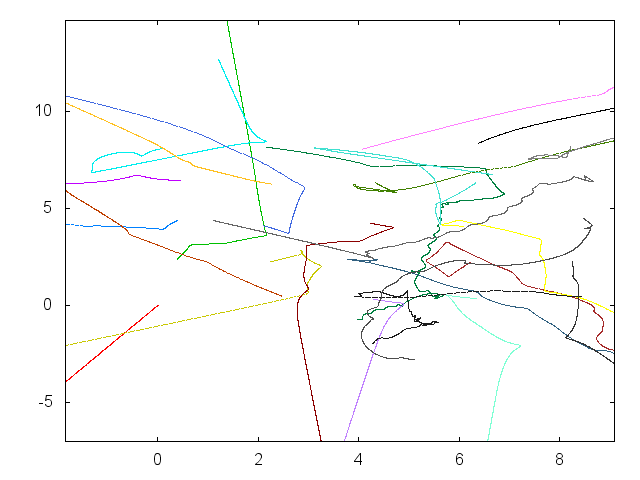Simulation of Molecular Dynamics
This program simulates a microscopic (25 atoms) portion of a gas like Argon:
n:5
v0:2
dt:0.01
N:n*n
P:,/(0.5*(n;n)_draw 0)+{x{[y;z](y;z)}/:\:x}2*(!n)
V:v0*2*(((N;2)_draw 0)-0.5)
R:{[p]p{_sqrt+/_sqr(x-y)}/:\:p}
NV:{[p](p{x-y}/:\:p)%R[p]}
F:{[p]24*((2%R[p]^13)-1%R[p]^7)*NV[p]}
TF:{[p]+/+{1_(x?(0n;0n))!x}'F[p]}
st:{[S] ne:((2*S[0])-S[1])+(_sqr dt)*TF[S[0]]
(ne;S[0];(ne-S[1])%(2*dt))}
res:($*:'st\[2000;(P;P-V*dt;V)])
`0:(|1_|"plot ",,/{[x]"\"-\" u 1:2 w d,"}'(!N)),"\n"
{`0:(,/'" ",''res@\:x),,,"e"}'(!N)
Since neither walls nor boundary conditions are used, the gas will expand indefinitely. I might add boundary conditions eventually, but the program isn't particularly efficient anyway (read: it's highly inefficient).
